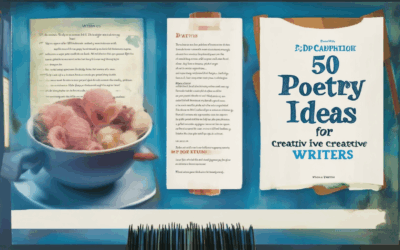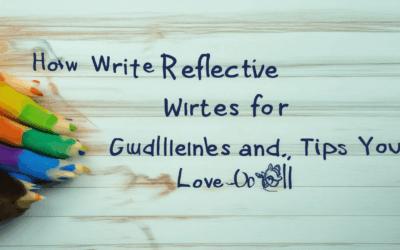Reflective storytelling is a powerful technique that allows individuals to explore their experiences, emotions, and growth through the art of storytelling. By crafting narratives that delve into personal journeys, reflective storytelling offers a unique way to process life events, uncover insights, and foster self-awareness. Whether you’re sharing a brief moment of introspection or detailing a significant life experience, the act of reflecting through storytelling can transform mere recollection into a profound exploration of human emotion and learning. In this article, we’ll dive into the essence of reflective storytelling, uncover its benefits, and provide practical examples to illustrate its transformative power. From understanding the core components of effective storytelling to exploring real-world applications, this guide will equip you with actionable strategies to master reflective storytelling and unlock its potential for personal growth and shared connection.

What is Reflective Storytelling?
Reflective storytelling is a narrative technique that emphasizes introspection, analysis, and contextual understanding. It involves authors and speakers who pause to reflect on their experiences, observations, or emotions before sharing them. This method allows for deeper self-awareness and connection with the audience.
Benefits of Reflective Storytelling
- Enhances self-understanding and emotional intelligence.
- Fosters empathy and connection between the narrator and listener.
- Encourages critical thinking and meaningful dialogue.
- Provides a platform for personal growth and healing.
Techniques for Practicing Reflective Storytelling
- Pause after sharing a story to invite reflection.
- Ask open-ended questions to encourage deeper discussion.
- Share stories that evoke personal or universal emotions.
- Use metaphors or symbols to convey complex ideas.
Connection to Silken Drum
Silken Drum is a platform that celebrates and supports creative expression, including reflective storytelling. Our blog features essays, poems, and stories that encourage readers to reflect on their own experiences. Explore our community-driven discussions and join us in fostering a space where creativity thrives.
Visit Silken Drum to discover more reflective content and connect with like-minded individuals.
Conclusion
Reflective storytelling is a powerful tool for personal growth and connection. By embracing this approach, we can create narratives that resonate deeply with others and inspire meaningful change. Join us at Silken Drum to explore the art of storytelling and its role in shaping our lives.
What are the 5 C’s of storytelling?
The 5 Cs of storytelling are essential elements that help create engaging and memorable narratives. These components work together to captivate audiences and convey messages effectively.
1. Character
- Develop well-defined characters that resonate with the audience.
- Give characters depth through backgrounds, motivations, and personalities.
- Make characters relatable and believable.
2. Context
- Establish a clear setting or background that grounds the story.
- Provide historical or environmental details to enrich the narrative.
- Create a sense of place that helps audiences immerse themselves.
3. Conflict
- Introduce tension or challenges that drive the story forward.
- Develop conflicts that create stakes and keep the audience engaged.
- Resolve conflicts in a satisfying and meaningful way.
4. Climax
- Build up to a pivotal moment or turning point in the story.
- Create suspense and excitement leading up to the climax.
- Use the climax to reveal important truths or conclusions.
5. Closure
- Conclude the story in a way that ties together the plot points.
- Provide resolution that satisfies the audience’s expectations.
- Leave a lasting impression or evoke emotions with the ending.

What are the 5 P’s of storytelling?
The 5 P’s of storytelling are a simple yet effective framework to create engaging narratives. These elements work together to captivate audiences and leave a lasting impact.
- P for People: Engage your audience by focusing on relatable characters and their emotions. Use protagonists that resonate with your target demographic, making them feel seen and understood.
- P lace: Set the scene with vivid descriptions that immerse the reader in the story’s world. Whether it’s a bustling city or a serene forest, the setting should enhance the narrative’s atmosphere.
- P ictures: Visualize the story through descriptive language that paints a mental image. This helps readers envision the scenes, making the story more dynamic and memorable.
- P ersonalization: Tailor the story to reflect the audience’s experiences or aspirations. This creates a deeper connection, making the narrative feel personalized and relevant.
- P eril: Introduce conflict or challenge to drive the story forward. A well-crafted peril keeps the audience intrigued and invested in the outcome.
By incorporating these elements, storytellers can craft narratives that are not only compelling but also deeply engaging. Each P plays a crucial role in ensuring your story stands out and resonates with your audience.

The Four Pillars of Storytelling
The art of storytelling is built on four essential pillars that guide creators in crafting engaging narratives. Understanding these pillars helps in developing compelling stories across various platforms.
- People: At the heart of every story lies the characters. These are the protagonists, antagonists, and supporting cast who drive the plot forward. Creating relatable and multifaceted characters is crucial for connecting with audiences.
- Places: Settings play a vital role in shaping the story’s atmosphere. Whether it’s a bustling city, a serene village, or a futuristic world, the setting influences the tone and pacing of the narrative.
- Purpose: Every story serves a purpose, whether it’s to inspire, educate, entertain, or provoke thought. Clarifying this purpose helps in aligning the story’s direction with its intended impact.
- Plot: The sequence of events forms the backbone of the story. A well-structured plot ensures that the narrative flows logically, keeping readers engaged from beginning to end.
These pillars work together to create a cohesive and impactful story. To learn more about refining your storytelling skills, visit Silken Drum and explore our resources dedicated to creative writing.
What Are the 5 Stages of Storytelling?
The process of storytelling is a complex yet fascinating journey that captivates audiences and conveys meaningful messages. Below are the five primary stages of storytelling, each serving a unique purpose in crafting an engaging narrative:
- Exposition :
- This is the foundation of the story, introducing the setting, characters, and the central conflict or problem. It sets the stage for the audience, providing necessary background information and establishing the stakes.
- Example: In “Harry Potter and the Sorcerer’s Stone,” the exposition introduces Hogwarts, Harry’s family history, and his discovery of his magical heritage.
- Rising Action :
- This phase builds tension and momentum, leading the protagonist closer to the central challenge or conflict. It includes events that escalate the situation, creating curiosity and anticipation.
- Example: In “To Kill a Mockingbird,” the rising action involves Scout Finch learning about her father’s involvement in a controversial case, heightening the moral dilemmas of the story.
- Climax :
- The climax is the peak of the story, where the main conflict reaches its most intense point. It often features a turning point that resolves the central issue or reveals new information.
- Example: In “The Lion King,” the climax occurs during Mufasa’s battle with Scar, determining the fate of Simba’s kingdom.
- Falling Action :
- After the climax, the story moves toward resolution, showing the consequences of the events and allowing characters to reconcile with their experiences. This phase wraps up loose ends and provides closure.
- Example: In “The Hobbit,” the falling action involves Bilbo’s journey home, the destruction of Dol Guldur, and the lasting impact of his adventure.
- Resolution :
- The resolution ties up the story, answering unanswered questions and leaving the audience with a sense of completion. It may also foreshadow future events or suggest ongoing character development.
- Example: In “Pride and Prejudice,” the resolution confirms Mr. Darcy’s love for Elizabeth and solidifies their happy ending.
By mastering these stages, storytellers can craft narratives that resonate deeply with their audience, creating immersive worlds and compelling characters that leave a lasting impression.

The Storytelling Power of 3
The concept of the “Rule of Three” is a powerful tool in storytelling, emphasizing the importance of tripling key elements to create impact. This technique enhances engagement, memorability, and emotional resonance in narratives.
Overview of the Rule of Three
Storytellers often structure their works into three distinct parts:
1. Beginning : Introduce the protagonist, setting, and initial conflict.
2. Middle : Develop the plot, introduce challenges, and build suspense.
3. End : Resolve the conflict, provide closure, and leave a lasting impression.
This structure mirrors the human brain’s preference for digesting information in threes, making stories more relatable and memorable.
Examples of the Rule of Three in Practice
- Snow White : The Wicked Queen receives three visits from Snow White, creating a sense of inevitability and doom.
- Hero’s Journey : Joseph Campbell’s mythic structure outlines a three-phase journey, from the ordinary world to the ultimate boon.
- Plot Twists : A well-crafted story reveals three key turns that keep audiences guessing and engaged.
Enhancing Storytelling with the Rule of Three
By balancing act and reaction, storytellers can heighten tension and emotional impact. Each third element builds upon the last, creating a rhythm that captivates readers.
Community and Inspiration
At Silken Drum, we celebrate the art of storytelling through poetry, essays, and community discussions. Our platform fosters creativity and connects writers with like-minded enthusiasts, inspiring new stories every day.
Conclusion
The storytelling power of three lies in its simplicity and effectiveness. By mastering this technique, writers can craft narratives that resonate deeply with audiences, leaving a lasting legacy. Explore Silken Drum to discover more tools and techniques for your creative journey.




0 Comments